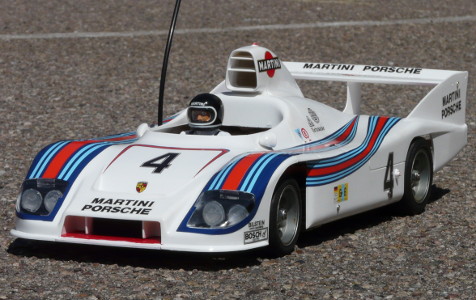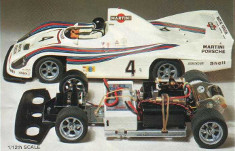First On-Road platform
We're talking about the one used by Tamiya's very first RC model back in 1976. The one that is the ancestor of any other model from the brand, the one that started it all: the first kit, the famous Porsche 934 Turbo RSR, kit number RA-1201 reference (see the history of Tamiya kit numbering).
58001 Porsche 934 Turbo RSR (1976)
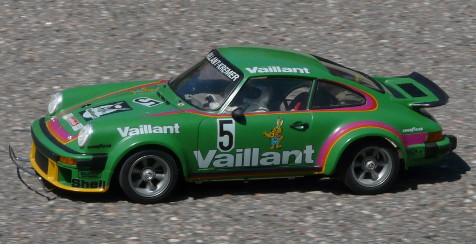
Porsche 934 Turbo RSR chassis
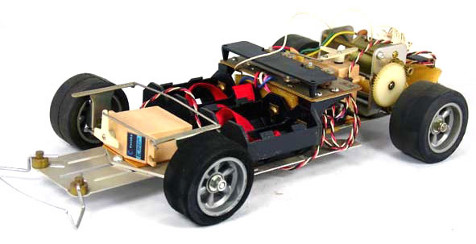
Bodyshell and chassis
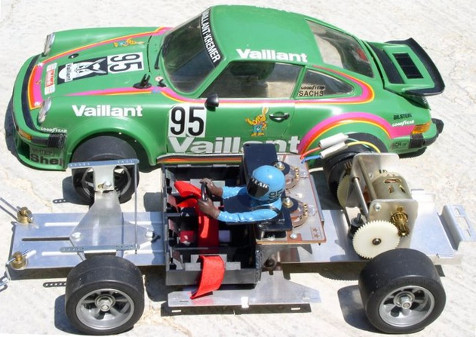
Gearbox and mechanical speed controller
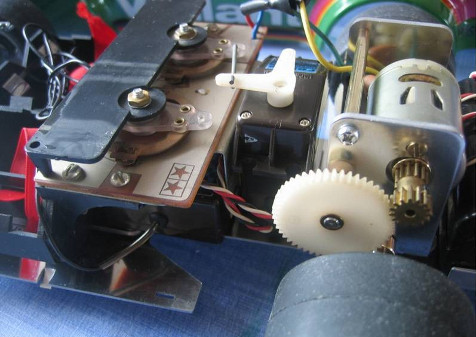
The Porsche 934 Turbo RSR boxart
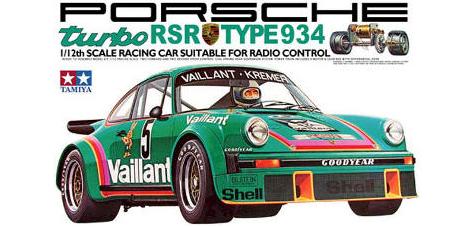
Model diagram
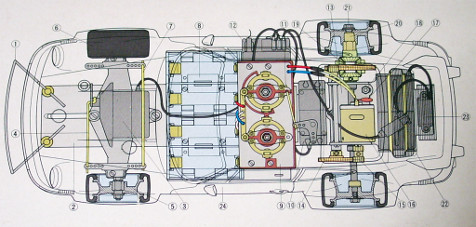
At the end of 1977, Tamiya released a limited black edition of this model to celebrate the 100.000 units produced(!). Of course, these editions are very rare, even more than the original, and their price reaches levels strictly opposite to their availability on the market. A new limited edition was released in december 2006 to celebrate the 30 years of this model, this time on a specially adapted TA-05 chassis.
Only one more model was based upon the same chassis because Tamiya will quickly introduce an evolution for the next models. This is another Porsche, and two minor changes occurred:
- the mechanical speed controller was replaced with a more progressive unit
- the Mabuchi RS-360 motor was replaced with a more powerful Mabuchi RS-380 (a little bit longer)
58002 Martini Porsche 935 Turbo (1977)
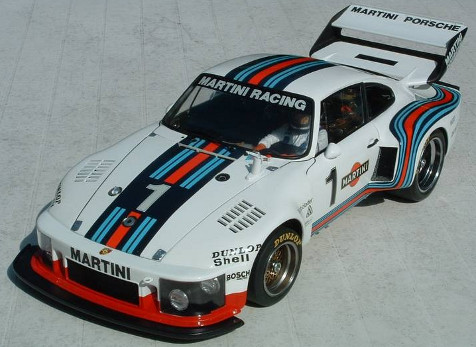
Bodyshell and chassis
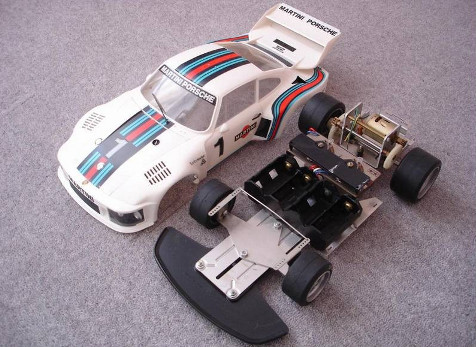
Partially assembled bodyshell
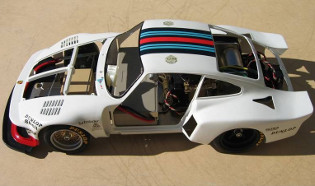
Bare chassis
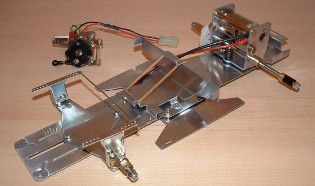
Rolling chassis
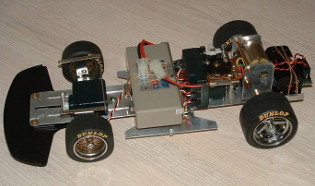
For their first RC models, Tamiya bet on their static model know-how: this explains the 1/12th scale bodies and why they are so detailed. The detail level is so high that you do need scale-model skills to build them since many parts need to be carefully glued to assemble them.
On the chassis side, energy is provided by dry cells (NiCad batteries are possible), suspension only results from the chassis flex, but the models already feature a differential.
Truly, these two first models are models in motion with a very limited top speed. However, Tamiya quickly understood that RC races were very popular...
This is why Tamiya update their first chassis as soon as 1978 and start their strategy of offering several models on a unique chassis, just varying the bodyshell. "Competition Special" versions are released, they are the first of today's R versions (R stands for Racing).
58005 Lamborghini Countach LP500S (1978)
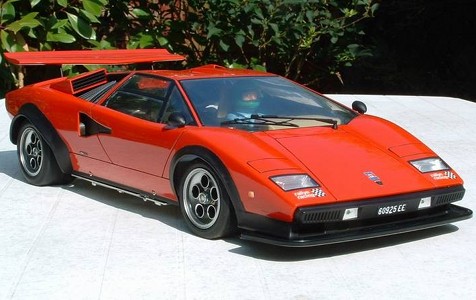
58008 Lamborghini Countach LP500S (Competition Special) (1978)
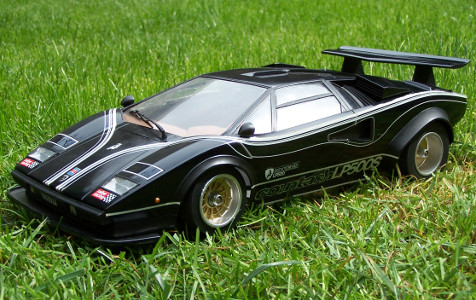
58009 Toyota Celica LB Turbo Gr.5 (Competition Special) (1978)
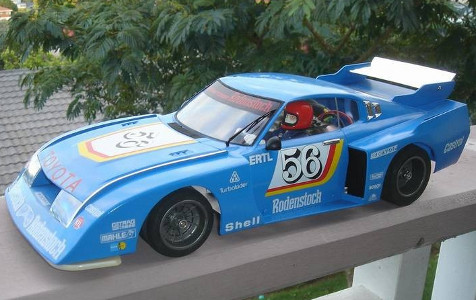
Lamborghini Countach LP500S
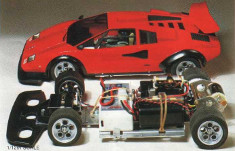
Lamborghini Countach LP500S (CS)
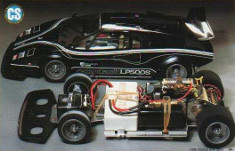
Toyota Celica LB Turbo Gr.5 (CS)
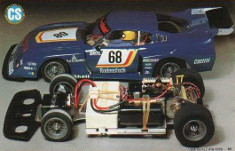
The chassis update mainly focuses on transmission and motor position moved to the rear in order to improve grip. Generally speaking, the new chassis is reinforced and now features a cradle for the NiCad pack instead of dry cell housing, even if the NiCad cradle is still an option on non-CS versions. By the way, steering was also modified for improved handling.
In addition, Tamiya introduced the CS Competition Special variant which is an "hopped-up" chassis:
- Mabuchi RS380 motor replaced with a much more powerful Mabuchi RS-540
- motor mount is different and relocated inner chassis
- front tires are two-type sponge (hard compound in the middle, soft on the outside)
- wider rear sponge tires
- stiffened chassis
- required 6v Ni-Cad pack instead of dry or rechargeable cells
The Lamborghini Countach LP500S and its Competition Special version
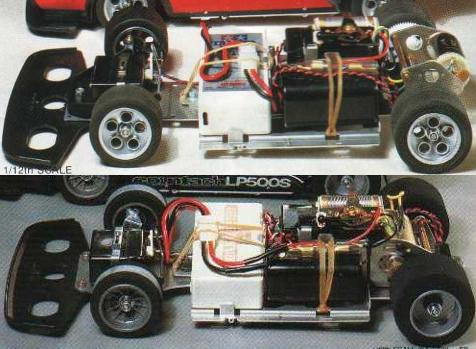
Competition Special chassis and its "basic" version
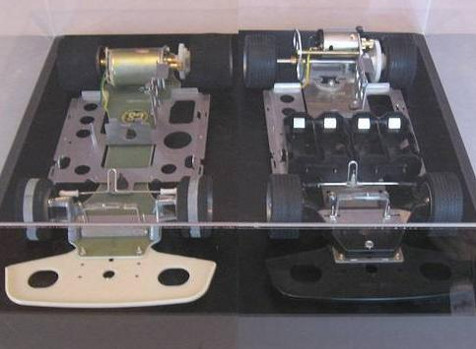
Despite the "competition" improvements, the CS versions are still very light and can hardly be controlled due to the increased motor power and the chassis overall grip and steering limits.
Conclusion about the platform
Strategically, this very first platform is obviously fundamental since it makes Tamiya step into a new market. The risk was quite important since the late 70's RC world was still at its beginning, either as a market or technologically.
Ni-Cad packs were just born and manufacturers took some time to remove the dry cell housings from their models. The radio equipment, still quite basic, was probably the most advanced element of any RC model.
Tamiya's first great move is done on motor side: they are very reliable and robust elements that already long proved their qualities with Mabuchi providing them for dot printers for years. That judicious choice prevents Tamiya from taking a big industrial risk in producing them when the RC market is just at its beginnings. The partnership with Mabuchi still lasts after more than 30 years, even if Tamiya introduced a second source with Johnson Electric for standard motors.
The second is to make use of their renowned static model know-how: their bodies very high detail level will, de facto, become the reference on the new market. Very nice decision since the industrial risk on this embryonic market is drastically lowered by the use of already existing bodies and molds to produce them: design cost is close to non existent and the production levels increase. Tamiya also applied their know-how in making assembly manuals for this new market, and still remains one of today's standards for that.
This strategy of approach in order to conquer a still very restricted market in the late 70's will prove to be a tremendous success celebrated by the first model 100.000 units sold in only 1 year. Step by step, Tamiya will develop a specific strategy for this new market, the 1/10th scale bodies being the most obvious proof of this.
Before reviewing the next platform, let me show you this video of what became a rare moment due to the age of the models: my friend Laurent from Tamiya and More and me driving together his Porsche 934 Turbo RSR and my Martini Porsche 936 Turbo a the club track.
Related articles:




